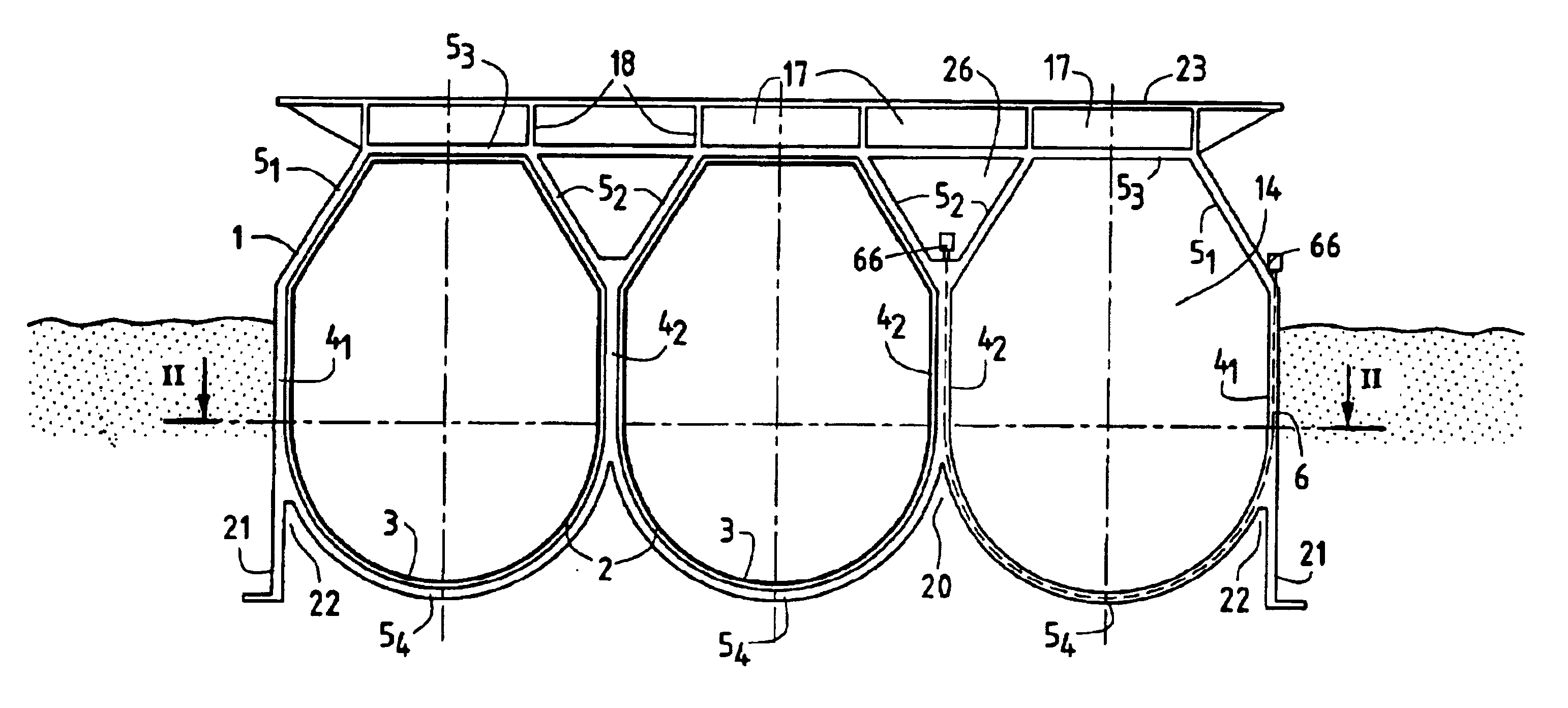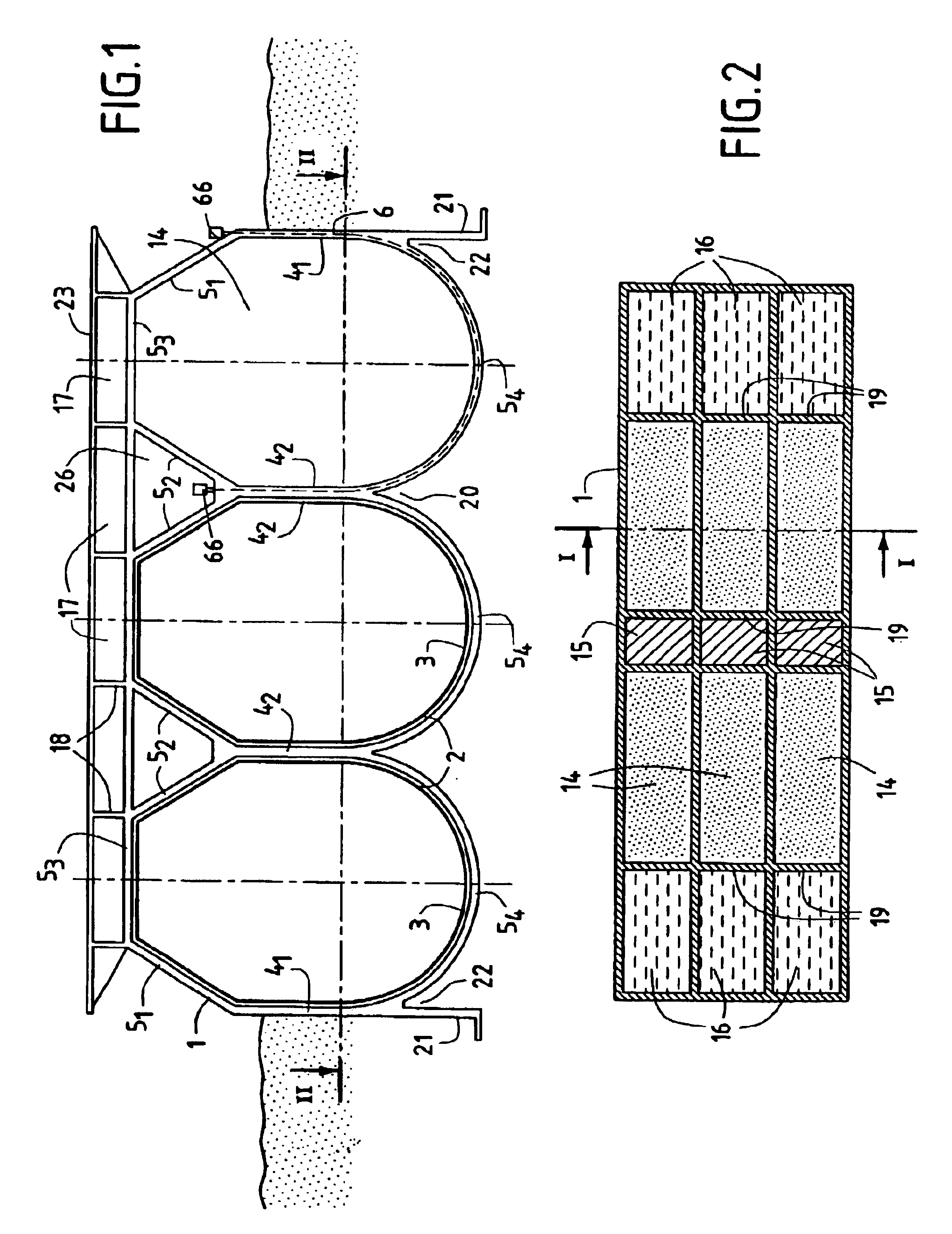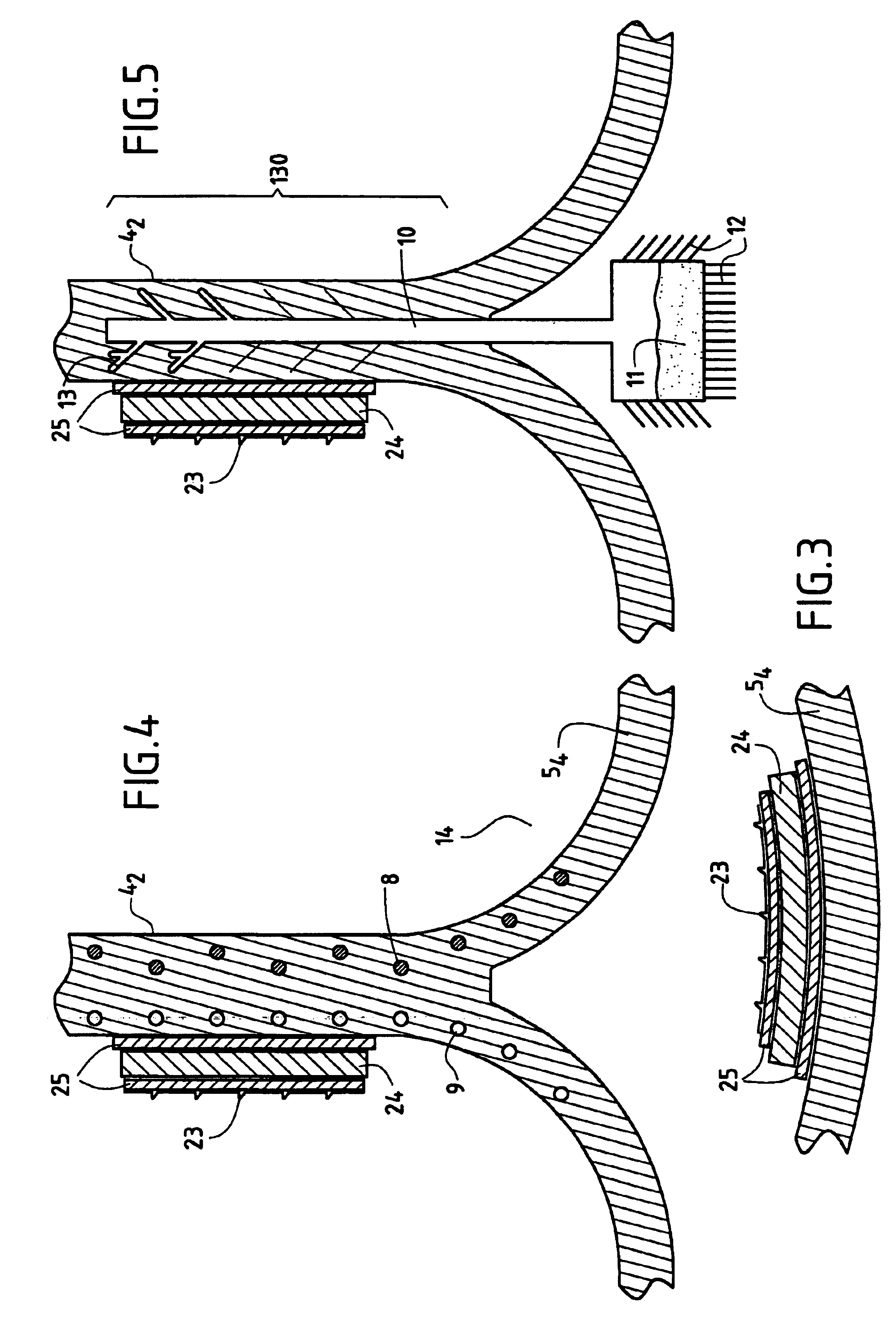Liquefied gas storage barge with concrete floating structure
a floating structure and liquefied gas technology, applied in the direction of floating buildings, hulls, vehicles, etc., can solve the problems of vessel being lost, no longer able to withstand, and extremely expensive lng tankers
- Summary
- Abstract
- Description
- Claims
- Application Information
AI Technical Summary
Benefits of technology
Problems solved by technology
Method used
Image
Examples
Embodiment Construction
The barge according to the presently preferred embodiment of the invention as shown in FIGS. 1 and 2 comprises a concrete structure 1 made of reinforced concrete with metal reinforcement and prestressed using cables. As shown, it comprises six cryogenic storage tanks 2 disposed in compartments 14. The walls of the tanks 2 are shown diagrammatically in FIG. 3 and are described below.
The barge of the invention shown in cross-section in FIG. 1 presents a profile that is constant all along the liquefied gas storage zone, with transverse bulkheads 19 in its partially submerged bottom portion defining, as shown in FIG. 2:
compartments 14 for containing the cryogenic tanks 2;
compartments 15, which can be similar in shape to the compartments 14 or of rectangular shape, for storing other fluids such as gas oil, fresh water, or any other substance such as condensates or butanes and propanes which can be stored either in free-standing refrigerated tanks or in tanks under pressure at ambient tem...
PUM
| Property | Measurement | Unit |
|---|---|---|
| Length | aaaaa | aaaaa |
| Temperature | aaaaa | aaaaa |
| Thickness | aaaaa | aaaaa |
Abstract
Description
Claims
Application Information
 Login to View More
Login to View More - R&D
- Intellectual Property
- Life Sciences
- Materials
- Tech Scout
- Unparalleled Data Quality
- Higher Quality Content
- 60% Fewer Hallucinations
Browse by: Latest US Patents, China's latest patents, Technical Efficacy Thesaurus, Application Domain, Technology Topic, Popular Technical Reports.
© 2025 PatSnap. All rights reserved.Legal|Privacy policy|Modern Slavery Act Transparency Statement|Sitemap|About US| Contact US: help@patsnap.com



